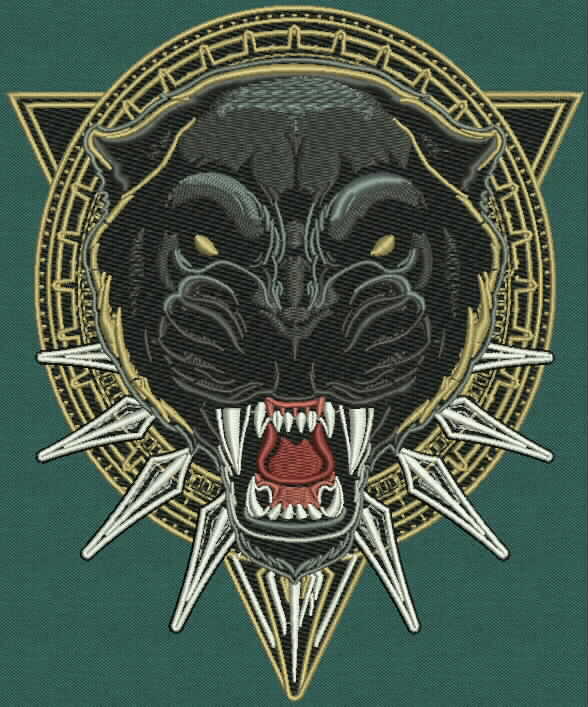Dependable Digitizing for Embroidery: Trusted by Experts
Dependable Digitizing for Embroidery: Trusted by Experts
Blog Article
Streamlining the Art of Needlework Digitizing: Step-by-Step Guide
Needlework digitizing is a thorough craft that demands accuracy and imagination. As technology remains to breakthrough, the digitization procedure has become more easily accessible, permitting enthusiasts to bring their detailed styles to life effortlessly. In this guide, we will certainly unravel the complexities of needlework digitizing, breaking down each action systematically to simplify the procedure and equip both novices and seasoned embroiderers alike. Keep tuned to discover exactly how you can simplify this complex art form and transform your creative visions right into beautifully stitched work of arts.
Understanding Needlework Digitizing Software
Needlework digitizing software program acts as an essential device for changing elaborate designs right into electronic layouts suitable with needlework devices, promoting exact stitching and personalization. This specialized software program enables customers to import different image file layouts, such as JPG or PNG, and convert them into needlework machine-readable styles like DST, EXP, or PES - Digitizing for Embroidery. By utilizing features like stitch editing, rug options, and string color choice, digitizing software program makes it possible for individuals to regulate every facet of the layout procedure
Additionally, advanced needlework digitizing software uses tools for producing complex designs, changing stitch thickness, and incorporating elaborate details. Users can likewise sneak peek the style before stitching it out, making certain precision and reducing mistakes. Furthermore, numerous software programs give automated features that assist streamline the digitizing procedure, conserving effort and time.
Recognizing the capacities of needlework digitizing software is crucial for accomplishing high-quality cause embroidery tasks. By understanding this device, needlework enthusiasts and specialists can unleash their creative thinking and bring intricate styles to life with accuracy and performance.

Choosing the Right Style Documents
After familiarizing on your own with the capacities of embroidery digitizing software program, the next important action in the procedure is selecting the right layout apply for your job. Digitizing for Embroidery. When choosing a design declare embroidery digitizing, it's crucial to consider the complexity of the layout, the dimension of the final product, and the kind of fabric you will certainly be functioning with
For elaborate styles with great details, a high-resolution image or vector documents is advised to ensure that the embroidery machine can properly duplicate the design. Furthermore, the size of the last item plays a substantial role in choosing the appropriate style file. Larger designs may call for higher resolution data to maintain clearness and intensity.
Additionally, the sort of textile you will be embroidering on influences the selection of design documents. Various materials may need changes in the style file to guarantee that the stitches are correctly aligned and the design looks like meant. By very carefully selecting the ideal style documents based on these variables, you can establish yourself up for an effective needlework digitizing procedure.
Digitizing Tools and Methods
Utilizing specialized software application and precision methods, digitizing devices are essential in transforming detailed styles into embroidery-ready data. Needlework digitizing software program, such as Wilcom, Hatch, or Embrilliance, supplies the needed system to transform artwork into stitch information. These programs provide functions like stitch editing and enhancing, underlay choices, and lettering tools to make certain the design converts perfectly onto textile.
One of the essential strategies in digitizing is producing a clear course for the needlework device to comply with. This involves digitizing each element of the design with precision, identifying stitch types, thickness, and directions. By utilizing devices like digitizing tablets or software-specific plugins, embroiderers can attain a high level of accuracy in their digitized styles.
Additionally, mastering the art of padding sewing is crucial for producing high quality needlework. Underlay stitching supports the material and develops a structure for the design, guaranteeing that the final item is both visually appealing and long-lasting. By comprehending these digitizing devices and strategies, embroiderers can raise their craft and bring intricate layouts to life with accuracy and performance.
Customizing Stitch Types and Directions
The selection of stitch types can considerably impact the general look and structure website here of the embroidered layout. By strategically combining these stitch kinds, embroiderers can accomplish deepness and dimension in their styles.
Additionally, the instructions of stitches plays an essential duty in boosting the aesthetic allure of the last embroidery. Diverse stitch instructions can include structure, highlight particular aspects, and develop visual passion. For circumstances, transforming the angle of stitches can simulate movement or all-natural patterns like hair or plumes. By try out different stitch angles and patterns, embroiderers can bring their designs to life with amazing detail and details. Grasping the art of tailoring stitch types and instructions encourages embroiderers to unleash their imagination and elevate the top quality of their work.
Testing and Refining Your Digitized Layout
To ensure the precision and high quality of your digitized style, detailed screening and improvement are essential action in the needlework digitizing procedure. As soon as you have finished the digitization of your style, navigate to this site it is vital to check it before proceeding with the actual needlework. Examining enables you to recognize any type of potential problems such as thread breaks, stitch density issues, or style distortions that may affect the result.

After testing, it is necessary to refine your digitized style based on the comments from the examination sew-out. This might entail tweaking sew setups, readjusting thickness, or making changes to the total style to attain the wanted end result. By repeating via screening and improvement, you can fine-tune your digitized design to excellence prior to moving on with the actual needlework process.
Conclusion
Finally, understanding the art of embroidery digitizing needs a comprehensive understanding of the software application, picking the original site ideal style documents, making use of digitizing devices and methods, tailoring stitch types and directions, and testing and fine-tuning the digitized layout. By complying with these actions, embroiderers can simplify the digitizing procedure and produce premium stitched designs with precision and performance.
Report this page